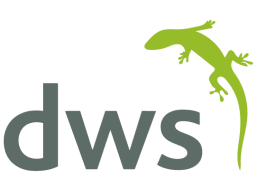Enterprise application software plays a vital role in managing a wide range of business processes and workflows. The complex interdependencies of thousands of discrete objects combine to control everything from finance and accounting to warehousing and logistics, customer relationships and human resources.
Introducing change to these critical business systems is inherently risky. In many cases, it’s a lack of insight that leads to uncertainty – if you don’t understand the scope of the changes that are to be made, you can’t effectively budget for, or resource, the project. This fear of the unknown often forces organisations to delay updating or upgrading systems, leading to a significant opportunity cost:
- Exposing core systems to security vulnerabilities.
- Failure to take advantage of new features and functionality.
- Failure to address process and workflow inefficiencies.
It’s not unusual for enterprise application software customers to want to squeeze every last drop of value from their legacy systems – especially if they are running a significantly modified version. Oracle JD Edwards EnterpriseOne is a classic example.
JD Edwards EnterpriseOne 9.2 is being used by thousands of companies around the globe. It is being supported through at least the end of 2032 and Oracle has delivered more than 670 new features since it was released in October of 2015.
Given the number of enhancements made available with each release (Release 23 was made available at the end of 2022), it might seem strange that businesses choose to lag behind the innovation curve. Why? Could it be that they are wary of change? More specifically, they may want to avoid the perceived cost and complexity involved in running an update or upgrade project. I say perceived, because in many cases, businesses struggle to accurately predict the time and effort required for these change-event projects – particularly when it comes to uplifting custom items or extensions.
Do you really know what is changing?
Accurate information is the key to good decision-making. When assessing the potential impact of an update or upgrade, you need to clearly identify what is changing, and how what is changing impacts any modifications you have made. Traditional methods, that rely on reports, and analyst/programmers doing analysis, can create inaccurate estimates as they over-estimate or under-estimate the number of modified objects.
False flags can lead to an over-estimation of the number of modified objects, exaggerating the size of your modified footprint by anything up to 60%. Worse still, a missing flag could significantly impact on systems performance if it’s missed during the technical uplift.
The type and extent of modification will also impact on the amount of effort required to uplift the code. Custom code, modified standard code, or modified copies of standard code all have varying degrees of complexity.
Fortunately, there are solutions available that can help enterprise application software customers fully audit and scope their change-event projects. Our Dimension Analyze™ service, for example, analyses every object, line of code and setting, down to pixel movement level of detail.
We identify the from/to base net change for every modified object and we identify the net change type and severity of impact against every modified object. We also identify all those modified objects that are no longer in use, so do not need to be upgraded. This represents an unrivalled opportunity to retire unused code. reduce the size of your modified footprint and move closed to standardization. This has the added benefit of making every subsequent change project smaller, faster, and smarter.
Quantifying the development costs of a change-event project
Without an accurate picture of your modified footprint, it’s virtually impossible to put an accurate cost to the development effort required during and update or upgrade. Sample and extrapolate, or worse still the “one-third rule”, have proven wholly inaccurate when it comes to estimating the time and effort required for a technical uplift.
Dimension Analyze eliminates the guesswork when it comes to planning development. With the detailed information it provides, we can estimate the upgrade effort required for every modified object, not just in man days but right down to hours and minutes level of detail. This means we are able to offer fixed price and timescale update and upgrade services.
What about testing?
Given that testing can account for the majority of time and effort associated with an ERP change-event project, the requirement for informed decision-making is just as important when it comes to planning the testing that will be required. The safety-first approach of “test everything” only makes sense if you don’t know what’s changed and is both expensive and inefficient. With greater visibility of what objects have changed, you can significantly reduce the burden of testing, simply by only testing what needs testing.
Once again, there are tools available to help transform the way businesses test their enterprise application software updates. Our Dimension Focus™ product is an innovative impact analysis tool that takes the guesswork out of test planning. It analyzes and grades the impact of an update (or any other change event) on standard, copied and custom objects. It then creates a testing heatmap to illustrate the level at which any application is affected by the change event. The net result is a saving of up to 80% on testing effort.
If you would like to find out more, please visit our product and services pages. For real-world examples of Analyze and Focus in action, check out the case studies in our resource library.




